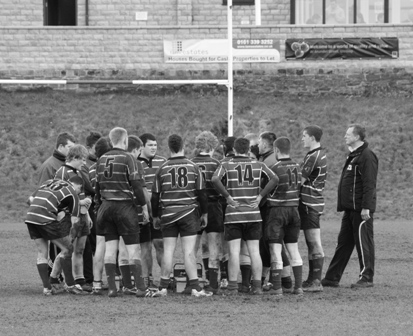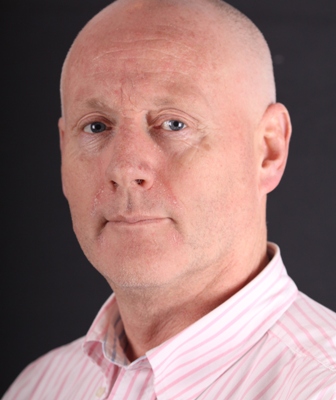
The profile of school sport has steadily risen over the past decade
SSPs: good, bad or ugly?
John Eady explores the multiple faces of school sports partnerships and asks whether there might be a better way of delivering the same impact for less outlay.

The profile of school sport has steadily risen over the past decade
Well, it was a savage cut. The coalition government’s decision to axe the funding for school sports partnerships (SSPs) in their entirety as opposed to simply reducing spending levels in this area was unexpected and unmerited. Or was it? What really is good, bad or ugly about SSPs?
The good begins with the origin of the SSPs which was, arguably, the TOPs programme. This was the Youth Sport Trust’s greatest triumph, the one that set it on the road to its present high-profile position. It was genuinely innovative, simple, effective and extremely well received in schools and had a genuine influence on the confidence of junior school teachers when it came to PE. Another plus is that there is no doubt that the profile of PE and school sport has risen significantly over the last 10 to12 years and that the spines of some of the many programmes that have been rolled out with and through SSPs do have merit.
It may also be that when looking at the achievements of SSPs with objectivity we should be more complimentary. Arguably, if they have managed to maintain levels of engagement in PE and school sport in the face of the societal onslaught of essentially sedentary computer and phone- or iPod-based entertainment they have done a sterling job.
The key question, one that is still essentially unanswered, is whether more young people emerging from schools are fitter, more physically literate and more motivated to be involved in competitive (or any) sport than they were 10 years ago?
The bad includes the observation that SSPs were much more bureaucratic than they needed to be and suffered from government and YST driven ‘initiative overload’. Their tendency to insularity was also exacerbated when what we used to wryly call the silent ‘CL’ (club links) of the PESSCL strategy was airbrushed out and, in its second iteration, it became the PESSYP (young people) version. It would be a surprise if, in the eyes of the incoming administration, SSPs were not also ‘tarred’ by the smoke and mirrors surrounding the exact meaning and rigour of performance targets set for many programmes. This accompanies the questionable validity (to say the least) of the evaluation process via which the much-vaunted 75% target was measured.
The ugly includes the coalition government’s mantra of competition. Unsurprisingly, under the new (in education definitely ‘Conservative’) administration the term ‘competitive sport’ is strongly emphasised, the implication being that there has not been enough. This is not the case. There is little doubt that a good level of competitive sport is taking place in state schools. Evidence also suggests that the menu of sports available has also broadened substantially over the last decade. Where SSPs have arguably failed or under-performed is ‘inclusion’ in competitive sport. Most opportunities still go predominantly to the most able and motivated young people. In addition, for the bulk of coached extracurricular programmes there has been an over-concentration on pupils in years 5 and 6. Youth participation statistics (drawn from young people themselves) clearly illustrate the drop-out from sport (even among formerly active young people) when they (especially girls) make the transition from junior to secondary school, making a focus on attractive opportunity in years 8 and 9 all the more crucial.
As a typical example, girls who get to play (inter-school competitive) netball at one of up to, say, 10 feeder schools (much supported by SSPs) arrive in a secondary school environment where just one squad is run at years 7 and 8/9. With some honourable exceptions, this is an opportunity missed to extend engagement in competitive sport to those who enjoy playing but whose aspirations may ultimately be recreational rather than performance-based. Concurrently, the Gifted and Talented (or as I prefer to call it the ‘the interested and motivated’) programme fuelled the already overplayed PE teacher emphasis on first team players. Some of this occurs at the expense of applying their skills and expertise to ‘physically educating and enhancing the skills base of the bulk of mid-range young pupils. After all, what is a PE teacher if she or he is not a multi-skills coach?
So where to from here? While we have sympathy for those partnership development managers, particularly some of the very good ones, who may lose their jobs or have to take on diluted roles, maintaining the posthumous PR lament of the loss of SSPs per se is probably unproductive notwithstanding David Cameron’s apparent softening of position in prime minister’s questions on Wednesday 1 December.
Development of an alternative proposal, perhaps based upon resourcing the 450 former SSPs ‘family of school units’ with high-quality sports development officers with some budgetary resource, focused on supporting the extension of competitive opportunity for young people (within and outside the school environment) and club-links, could probably be done for (say) 25% of the budget. Tying this to some form of county sport partnership (CSP) management and national governing body overview would a ensure a less insular approach and alleviate the propensity to over-focus on delivery within and around schools themselves. It could also be productively tied to renewing the club-links process, which is fundamental to extending young people’s competitive or recreational involvement in sport going forward.
Who knows how easy or difficult it will be to make the case but there must be an opportunity, either now as part of an amelioration of the savagery of the cut, or post 2013, adapting the proposed investment in competitive sport linked to the Olympics to develop a new, better focused, targeted and productive national programme of this type.
John Eady is chief executive of Knight, Kavanagh & Page, an independent specialist consultancy practice in sport, leisure, culture, regeneration and green spaces.
The Leisure Review, December/January 2010/11
© Copyright of all material on this site is retained by The Leisure Review or the individual contributors where stated. Contact The Leisure Review for details.
Download a pdf version of this article for printing
